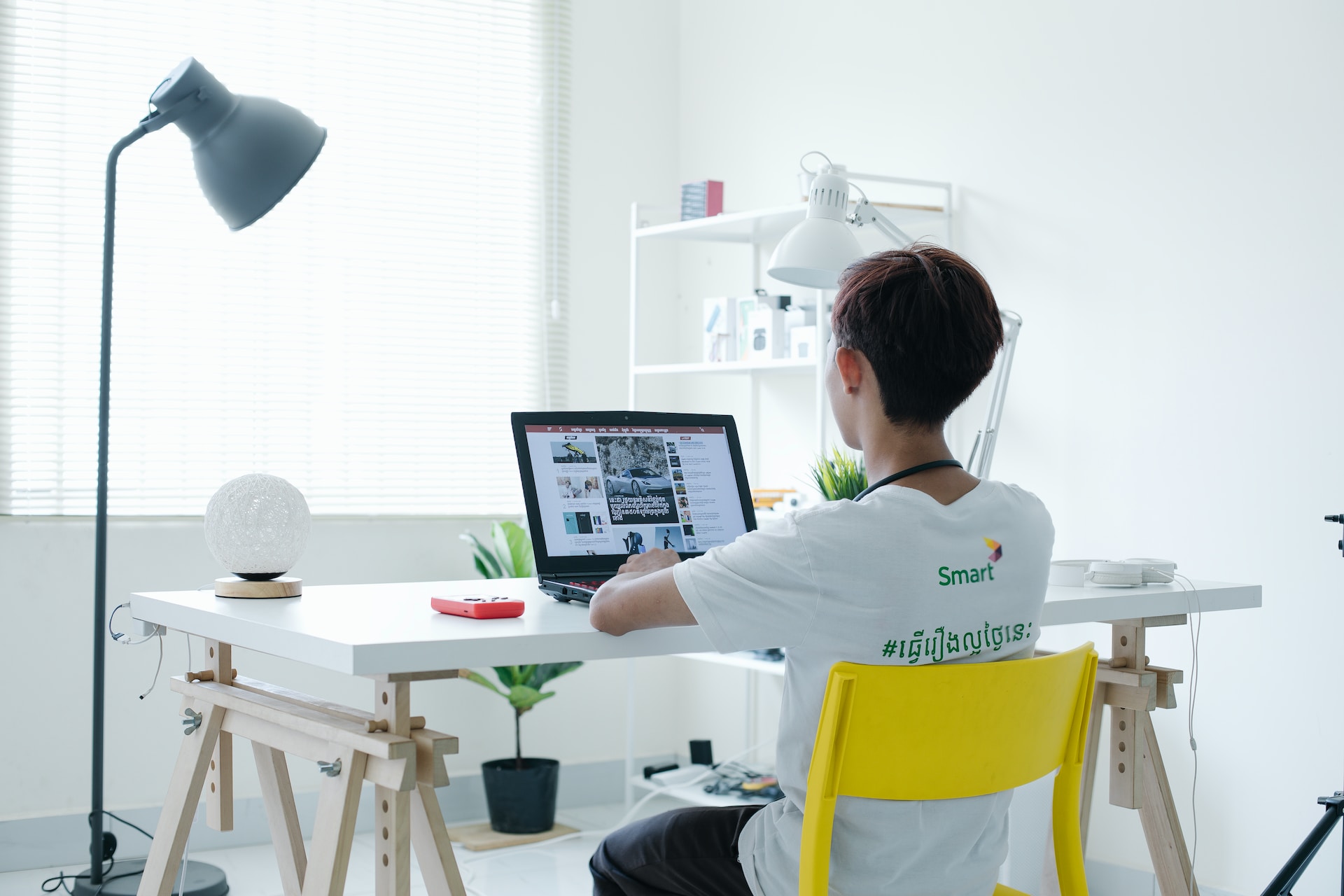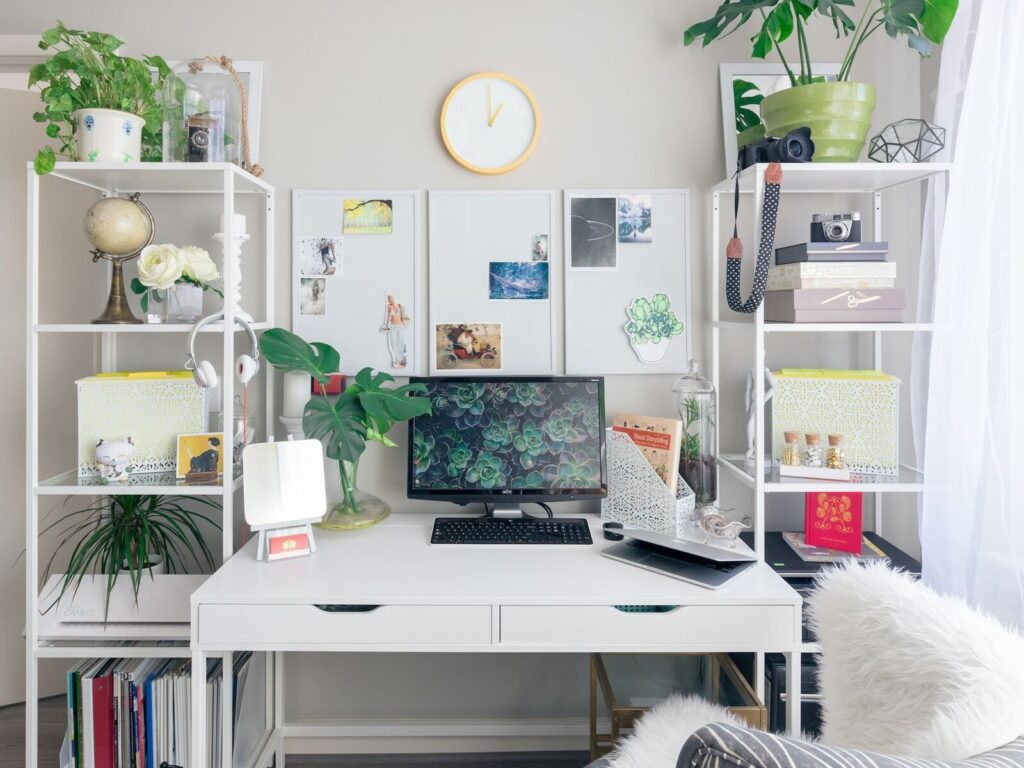The beginning of a new school year often brings with it a mix of excitement and anticipation. As students gear up for going back to school, there’s one element that can significantly influence their academic journey: their study space. The environment in which we learn plays a pivotal role in shaping our educational experiences, and the transformative power of a dedicated study space cannot be understated.
Imagine a space where every tool, every piece of furniture, and even the colors on the walls are aligned with a student’s unique learning style. Such a space doesn’t just serve as a physical location to hit the books; it becomes a sanctuary of focus, creativity, and productivity. A well-designed study area can amplify concentration, reduce distractions, and even boost your child’s enthusiasm for learning. It’s akin to a professional athlete having the right gear—when you have the right environment tailored to your needs, you’re already several steps ahead in the game.
In this guide, we’ll embark on a journey to design the perfect study space. Whether your child is a visual learner who thrives amidst vibrant colors and diagrams or a logical thinker who needs a minimalist, distraction-free zone, we’ve got you covered. And for those looking to elevate their study environment with the best tools and gadgets, keep an eye out for our product recommendations that will seamlessly integrate into your personalized study haven.
Setting the Stage for a Journey from Clutter to Clarity

In the hustle and bustle of academic life, it’s all too easy for our study spaces to become a reflection of our hectic schedules: papers strewn about, tangled cords, mismatched stationery, and textbooks piled high. This clutter, both physical and mental, can become a significant barrier to effective learning. It’s not just about aesthetics; a disorganized environment can lead to wasted time searching for materials, increased stress, and a reduced ability to focus on the task at hand.
The journey from clutter to clarity begins with introspection. Understanding your child’s learning style, preferences, and needs is the first step. Does he or she need a pinboard to visualize complex ideas? Or perhaps a digital tool to organize their thoughts? Maybe they thrive in a minimalist setting with neutral tones, or perhaps a vibrant, dynamic backdrop fuels their creativity.
Once you’ve identified their needs, the next step is decluttering. This process is both liberating and grounding. It’s about letting go of the unnecessary and making space for what truly matters. It’s not just about physical items but also about decluttering one’s mind. By removing distractions and creating a dedicated study zone, you’re setting clear boundaries between ‘study time’ and ‘me time’, allowing for deeper focus and more effective learning sessions.
Incorporating the right tools and products can further enhance this transformation. Whether it’s an organizer to keep your notes in order or a relaxing kinetic sandscape Art piece to maintain a serene environment, the right items can make all the difference.
Embarking on this journey from clutter to clarity is not just about creating a study space; it’s about crafting a mindset. A mindset that prioritizes organization, focus, and continuous growth. And in this realm of clarity, academic success is not just a possibility; it’s a guarantee.
Understanding and Catering to Different Learning Styles
The Science Behind Individual Learning Preferences
Every individual possesses a unique way of absorbing, processing and retaining information. This phenomenon, deeply rooted in cognitive science, underscores the importance of understanding individual learning preferences. At its core, the concept of learning styles suggests that when teaching methods align with a student’s preferred style, they can comprehend and retain information more effectively.
For instance, visual learners might grasp concepts better through diagrams and charts, while auditory learners benefit from lectures and discussions. Kinesthetic learners, on the other hand, thrive when they can touch and interact with their learning materials. Recognizing these differences isn’t just an academic exercise; it’s a crucial step in creating an environment where every student can excel.
By tailoring study spaces and methods to these preferences, we not only enhance the learning experience but also foster a deeper connection and appreciation for the learning journey itself.
The Analytical Thinker
Analytical thinkers thrive on logic, precision, and structure. For them, a well-organized environment is paramount to their cognitive processes. A desk tailored for the analytical mind would prioritize organized compartments, ensuring that every tool and document has its designated place. This meticulous arrangement reduces the time spent searching for items and allows for a seamless transition between tasks.
Incorporating a digital calendar into their workspace serves a dual purpose: it keeps track of deadlines and schedules while also offering a visual representation of their time management. This digital tool aids in planning, ensuring that every minute is used productively.
Lastly, a muted color palette complements the analytical thinker’s need for minimal distractions. Soft grays, blues, or earth tones create a serene environment, allowing them to dive deep into their analytical tasks without unnecessary visual interruptions. In essence, this setup becomes a haven where logic and clarity reign supreme.
The Nature Lover
For those who find solace in the embrace of nature, bringing its essence indoors can be both calming and invigorating. The nature lover’s study space should be a reflection of this affinity for the outdoors.
Starting with furniture, opting for wooden pieces not only provides durability but also infuses the space with a touch of the outdoors. A wooden desk, for instance, can be both functional and aesthetically pleasing.
Plants play a pivotal role in this setup. They not only purify the air but also introduce a splash of color and life to the study area. Succulents, snake plants, a fiddle leaf fig, and other low-maintenance indoor plants can be great additions to your child’s workspace.
Lastly, nature-inspired decor can further enhance the ambiance. Wall art depicting serene landscapes, or even decorative items like stone paperweights or leaf-patterned rugs, can tie the whole theme together.
By integrating these elements, the nature lover’s study space becomes a tranquil oasis, promoting focus and well-being.
The Tech Guru
In the digital age, the Tech Guru is always ahead of the curve, equipped with the latest gadgets and software. Their study space should be a testament to this passion for technology, ensuring both functionality and sleek design.
A tech-friendly desk is the foundation of this setup. It should come with built-in charging stations, ensuring all devices remain powered up and ready to go. Monitor stands are essential for those who juggle between screens or simply want an ergonomic viewing angle.
Lastly, a cluttered space with tangled cables is a tech enthusiast’s nightmare. Hence, cable management solutions are crucial.
With these elements in place, the Tech Guru’s workspace becomes a hub of innovation and efficiency, where technology and design coalesce seamlessly.
The Minimalist
For those who find beauty in simplicity, the minimalist approach to design offers a serene and focused environment. The essence of minimalism lies in its “less is more” philosophy, ensuring that every item in the space serves a purpose.
At the heart of a minimalist study space is a clutter-free desk. Opt for a design that offers clean lines and a streamlined look.
While minimalists prefer fewer items, the essential tools they choose are of utmost importance. Consider a multipurpose organizer like the DALTACK 4-Tier Desk Organizer that can hold pens, notebooks, and other essentials without overwhelming the space.
The color scheme plays a significant role in setting the mood. Neutral colors like whites, grays, and beiges create a calming ambiance, allowing the mind to focus without distractions.
By embracing the minimalist approach, one creates a space that is not only aesthetically pleasing but also promotes productivity and tranquility.
The Collaborative Learner
Collaborative learners thrive in environments that foster interaction, discussion and shared insights. Their study space should be designed to accommodate group sessions while also providing tools that facilitate brainstorming and interactive learning.
A spacious desk is essential for the collaborative learner. It should be large enough to accommodate multiple individuals, their study materials, and tech gadgets.
Brainstorming boards are invaluable tools for collaborative learners. Whether it’s a whiteboard for jotting down ideas or a corkboard for pinning important notes, these boards serve as a visual representation of collective thoughts.
In today’s digital age, interactive tech tools play a pivotal role in collaborative learning. Gadgets like interactive projectors or tablets with stylus pens allow for dynamic discussions and shared note-taking.
With these elements in place, the collaborative learner’s workspace becomes a hub of shared knowledge and creativity, fostering an environment where ideas flow freely and learning is a collective endeavor.
Crafting the Perfect Desk for Every Learner

In the realm of academic success, the importance of a personalized study environment is paramount. At the heart of this environment lies the desk – not just a piece of furniture, but a personal workspace tailored to the unique needs and preferences of the learner. Whether you’re an analytical thinker, a tech enthusiast, or someone who thrives in collaborative settings, the right desk can significantly enhance your learning experience. In this section, we’ll delve into the art of crafting the perfect desk setup for every type of learner, ensuring that each individual has the tools and ambiance they need to excel.
What Every Study Area Should Have Regardless of Learning Style
While personalization is key, there are certain essentials that every study desk should be equipped with to ensure maximum productivity and efficiency:
Ergonomic Chair: Ensuring comfort during long study sessions is crucial. An ergonomic chair provides the necessary support to maintain good posture and reduce fatigue.
Task Lighting: Proper lighting reduces eye strain and enhances focus. A flexible desk lamp that can be adjusted to direct light where it’s needed is a must-have.
Organizational Tools: Keeping your desk tidy is essential for a clear mind. Desk organizers, pen holders, and paper trays help in keeping everything in its place.
Tech Accessories: A power strip with surge protection, a mouse pad, and perhaps a laptop stand are essential for those who rely heavily on technology.
Incorporating Tech and Analog Tools for a Balanced Study Approach
In today’s digital age, technology has become an integral part of our learning process. From online courses to digital note-taking apps, tech tools have revolutionized the way we study. However, it’s essential not to overlook the timeless value of analog tools, which offer a tactile and distraction-free approach to learning.
For the tech-savvy student, consider integrating tools that streamline your study process. A standout recommendation is the Timekettle M3 Language Translator Earbuds. These earbuds, compatible with both iOS and Android, can translate up to 40 languages and 93 accents online, making them an invaluable tool for language learners or international students.
On the analog side, nothing beats the classic approach of jotting down notes or sketching out ideas. For this, the YouOKLight Multi-tool pen is a versatile choice. This multitool tech pen comes with a ruler and ballpoint, making it perfect for both writing and design tasks.
Balancing digital and traditional tools in your study space can offer the best of both worlds. While tech tools provide efficiency and convenience, analog tools can enhance focus and comprehension. By incorporating both into your study routine, you can create a holistic and effective learning environment.
Elevating Wall Storage and Organization
As the ‘back-to-school’ season unfolds, students and parents alike are on the hunt for innovative ways to optimize study spaces. One often overlooked area that holds immense potential for decluttering and organization is our walls. Elevating wall storage isn’t just about creating more room; it’s about designing a functional and aesthetically pleasing environment conducive to learning.
The Magic of Modular Wall Systems and Floating Shelves
As the kids head back to school, optimizing study spaces becomes a top priority. One of the most versatile and stylish solutions to this challenge is the integration of modular wall systems and floating shelves. These systems not only maximize vertical space but also offer a customizable approach to organization.
Modular Wall Systems: These are the epitome of flexibility. Designed to adapt to various needs, they can be reconfigured based on the items you wish to store or display. Perfect for students who have a dynamic set of study materials, these systems can evolve with their academic journey.
Floating Shelves: A minimalist’s dream, floating shelves offer storage without the bulk. They seamlessly blend with the wall, creating an illusion of space while providing ample room for books, stationery, or decorative items.
Incorporating these elements into your study space not only elevates the room’s aesthetics but also ensures that every study tool is within arm’s reach, making the ‘back to school’ transition smoother and more organized.
The Psychology Behind a Tidy Space

A cluttered space often mirrors a cluttered mind. The act of decluttering goes beyond just physical tidying; it’s a therapeutic process that can have profound effects on one’s mental well-being and productivity.
Psychological Benefits: Numerous studies have shown that a tidy environment can reduce stress and anxiety. When our surroundings are organized, our brains don’t have to work as hard to process information, leading to improved focus and mental clarity. Moreover, decluttering can provide a sense of accomplishment, boosting one’s mood and self-esteem.
Enhanced Productivity: A decluttered space means fewer distractions. When everything has its place, time isn’t wasted searching for items, leading to increased efficiency. Moreover, a tidy environment is more conducive to focused work, making tasks seem more manageable.
Mindful Living: Decluttering also promotes a more mindful and intentional way of living. By regularly assessing and organizing one’s belongings, individuals become more aware of what they truly need and value, leading to more conscious consumption habits.
Incorporating decluttering into one’s routine not only transforms physical spaces but also paves the way for mental clarity and a more balanced lifestyle.
Another Interesting Read: The Best Workstation Kitchen Sinks
Tips For Creating A Green Study Environment
In today’s fast-paced digital age, it’s easy to overlook the simple, organic elements that can bring a touch of serenity to our spaces. As we gear up for the ‘back to school’ season, it’s the perfect time to infuse our study areas with a touch of nature. A green study environment not only offers aesthetic appeal but also provides numerous health and productivity benefits. Let’s delve into how you can transform your study space into a green oasis, promoting both mental clarity and environmental responsibility.
Sustainable Materials, Brands, And Energy-Saving Gadgets
Sustainable Materials: Opt for furniture made from sustainable materials like bamboo, reclaimed wood, or recycled metal. These materials have a lower environmental footprint compared to traditional options. For instance, bamboo grows rapidly and is biodegradable, making it an eco-friendly choice for desks or chairs.
Energy-Saving Gadgets: Reduce your energy consumption with gadgets designed to be energy efficient. LED desk lamps, for example, consume less electricity than traditional bulbs and last longer.
Final Thoughts
As the “back to school” season approaches, it’s essential to recognize the profound impact a thoughtfully designed study space can have on one’s academic journey and overall well-being. The time and effort invested in creating such a space are not just about aesthetics or convenience; they’re about laying the foundation for long-term success.
Studies and personal experiences have consistently shown that a conducive environment can significantly enhance concentration, reduce stress, and foster a genuine love for learning. Moreover, as we’ve explored, tailoring a study area to individual learning styles can further optimize the benefits, ensuring that every study session is both productive and enjoyable.
But beyond the immediate academic advantages, there’s a broader perspective to consider. A well-organized study space can instill habits of discipline, organization, and mindfulness that will serve students well beyond their school years, in both their professional and personal lives.

